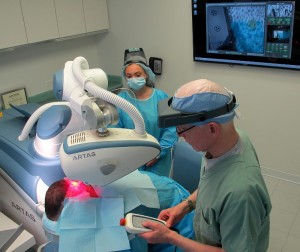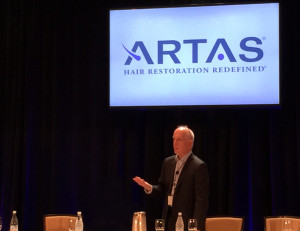Q: I had a follicular unit hair transplant performed by another doctor that was scheduled for 2,500 grafts and I ended up paying for exactly that amount. I was supposed to be paying per graft, so it seems strange that it came out to be exactly 2,500? How do I know what I really got? — J.R., Westport, C.T.
A: This is a question that should be addressed to the doctor that operated on you.
If a doctor is charging by the graft, then you should know exactly how many grafts you are receiving. It is possible that he/she hit the number (2500) exactly on the head, but statistically that is extremely unlikely. In a Follicular Unit Hair Transplant (FUT) procedure, a strip is removed from the donor area and then dissected into individual follicular units, so although an experienced surgeon can remove a strip that contains close to the desired number of follicular units, it would be very rare to hit that number precisely.
More importantly, it is impossible to perform follicular unit transplantation properly without knowing both the exact number of follicular units harvested from the donor area and the exact number of hairs in each unit (i.e. the number of 1-, 2-, 3-, and 4-hair follicular unit grafts). This information is essential in determining both the distribution and density of the hair transplant and in creating transitional zones such as the frontal hairline, where single-hair follicular units are required.
In all hair transplants, the number of grafts harvested should equal the number of recipient sites, so the doctor must know the exact number of grafts so that he can make the appropriate number of recipient sites. An exception to this rule is the stick and place technique, where each graft is inserted as soon as the site is made, but this technique is much less common than first making the recipient sites. The surgeon also needs to know the number of grafts so that he can make the sites in the appropriate distribution. For example, if the number of grafts harvested was less than anticipated, the doctor can space the sites further apart, cover less of an area (for example, not extend the restoration as far back into the crown) or harvest additional donor tissue – each option having advantages and disadvantages.
It is equally important to know the exact composition of follicular units, so that different densities can be created in different areas, producing the most natural appearance. For example, the 3- and 4- hair follicular units should be placed in the central forelock area as this area normally has the most density. On the other hand, if these larger units are placed near the hairline, they will look distinctly unnatural.
So how can the patient really know? Obviously, trust in your doctor is the most important insurance. If you are skeptical about the way the doctor conducted the consult (i.e. used a salesman to encourage a sale), if he or she skipped over important options such as medication, or if you felt pressured or rushed into making a decision to have surgery; you should be skeptical about other aspects of your care as well – such as an accurate graft count.
Although just a very general guide, here are some things you can do at your consult when trying to decide if a doctor can be trusted to give you accurate information regarding the number of grafts you receive.
- Ask to see the operating room – see if there are plenty of microscopes (the larger the session, the more are needed).
- Ask the doctor how he keeps count of the grafts that are dissected and how does he record how many hairs in each follicular unit graft.
- Ask the doctor how he keeps track of the number of recipient sites that are made.
- Ask to see how all this information is documented in the patient’s medical record.
- Ask the doctor if he refunds money to the patient if he transplants less grafts than scheduled.
- Speak with other staff members to confirm the use of dissecting microscopes for the entire surgery and confirm the procedure for tracking grafts.
In sum, knowing the exact number of grafts and their composition is extremely important, not only to ensure that you are being charged fairly, but in maximizing the aesthetic results of your follicular unit transplant procedure.
Be certain that this information will be available to you (and of course your surgeon) before scheduling a procedure.
Posted by Robert M. Bernstein M.D. 








